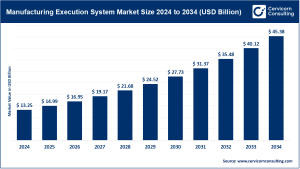Active Electronic Components Market Overview
The global active electronic components market is a pivotal segment of the electronics industry, encompassing semiconductors (including transistors, diodes, and integrated circuits), display technologies, and power sources such as batteries and photovoltaic cells. Unlike passive components that merely store or dissipate energy, active components regulate electric currents, amplify signals, and process data, making them indispensable in modern electronic systems.
In 2024, the market was valued at USD 361.03 billion and is projected to reach USD 639.52 billion by 2034, growing at a CAGR of 6.28%. This expansion is primarily driven by the increasing adoption of smart devices, IoT ecosystems, 5G networks, electric vehicles (EVs), AI-driven applications, and renewable energy solutions.
👉 Source: Active Electronic Components Market
Key Market Trends
Several technological, regulatory, and consumer trends are currently shaping the market landscape:
-
AI and Machine Learning Integration
-
AI-focused semiconductor solutions are revolutionizing real-time computing and automation.
-
Examples include AMD and Intel’s AI accelerators, which enhance performance in data centers, robotics, and autonomous vehicles.
-
-
5G Network Expansion
-
The deployment of 5G networks is increasing demand for RF components, high-frequency transistors, and signal amplifiers.
-
Broadcom and Qualcomm are developing 5G-enabled chips to support high-speed connectivity and IoT integration.
-
-
Electric Vehicles (EVs) and Renewable Energy Adoption
-
Power semiconductors are critical in EV powertrains and renewable energy systems, including solar inverters and battery management solutions.
-
Infineon Technologies and Analog Devices lead in manufacturing energy-efficient components for sustainable technologies.
-
-
IoT and Smart Devices Growth
-
Expanding smart home ecosystems, industrial automation, and wearable electronics drive demand for microcontrollers, sensors, and connectivity modules.
-
Companies like NXP Semiconductors and Analog Devices are advancing wireless communication and sensor technologies for IoT applications.
-
-
Government Support for Semiconductor Manufacturing
-
Initiatives such as the U.S. CHIPS and Science Act and the European Chips Act provide incentives for domestic production, fostering innovation and strengthening supply chains.
-
Market Drivers
The expansion of the active electronic components market is fueled by several key factors:
-
Rising Consumer Electronics Demand: The growing penetration of smartphones, laptops, gaming devices, and wearables drives the need for high-performance components.
-
EV Industry Growth: Increasing adoption of electric vehicles boosts demand for energy-efficient semiconductors and power management solutions. EV adoption is projected to grow at a CAGR of 20–25% in major regions, directly influencing semiconductor consumption.
-
Technological Advancements: AI, machine learning, 5G, and quantum computing require specialized active components capable of high-speed processing and energy efficiency.
-
Government Investments: Funding for semiconductor fabs and R&D initiatives promotes domestic manufacturing and long-term market stability.
-
Industrial Automation & IoT Expansion: The proliferation of smart factories and connected devices drives demand for sensors, microcontrollers, and analog/digital signal processing chips.
Impact of Trends and Drivers
These trends and drivers significantly influence market dynamics across segments and regions:
-
Semiconductor Segment: Growth is accelerated by AI chips, high-frequency transistors, and power management ICs.
-
Automotive Sector: Energy-efficient and high-performance components are increasingly required for EVs and autonomous vehicles.
-
Regional Influence:
-
North America: Strengthened by government funding and tech leaders such as Intel and AMD.
-
Europe: Growth driven by automotive electronics and green semiconductor initiatives.
-
Asia-Pacific: Dominates semiconductor fabrication with companies like TSMC and Samsung, alongside regional AI and IoT investments.
-
Challenges & Opportunities
-
Challenges: Supply chain disruptions, high R&D costs, and fierce competition among semiconductor firms.
-
Opportunities: Expansion in AI, 5G, EVs, renewable energy, and industrial IoT provides long-term growth potential. Companies focusing on energy efficiency, miniaturization, and connectivity are well-positioned to capture emerging market segments.
Future Outlook
The active electronic components market is expected to continue its robust growth trajectory, reaching USD 639.52 billion by 2034 at a CAGR of 6.28%. Emerging trends such as AI-driven semiconductors, 5G network deployment, EV adoption, IoT integration, and supportive government policies will drive innovation and market expansion. Firms that prioritize product innovation in energy efficiency, connectivity, and smart technology integration are likely to maintain a competitive edge over the next decade.
👉 Explore Full Report & Insights: Active Electronic Components Market


